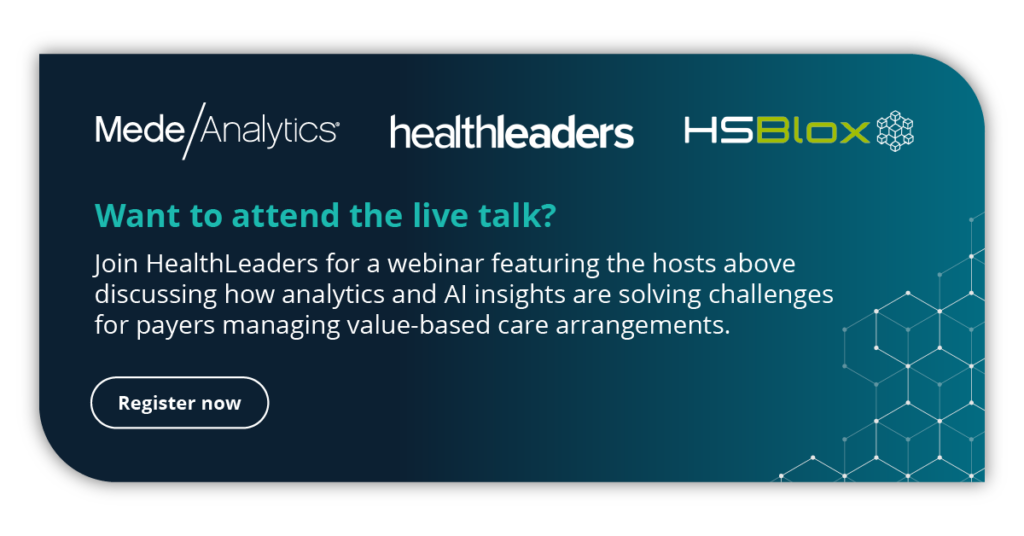At the top of the year, Rahul Sharma, Chief Executive Officer, and Lynn Carroll, Chief Operating Officer and Cofounder of HSBlox sat down with our own David Wolf and Andy De to talk all things contract administration and management. What is it? Why is it important? And how can payer organizations succeed at it? Keep reading for a recap of the conversation, and join us for our upcoming webinar with HealthLeaders.

1 – What is contract administration and management, specifically in a value-based care context?
Managing and administering contracts with providers and ACOs is one of the many parts that payer organizations play in value-based care arrangements. Broadly, it is the framework on which a value-driven healthcare ecosystem can be built. More specifically, it is reliable support and end-to-end administration for multiple payment models that emphasize outcomes over volume.
2 – Why is robust contract management a must-have?
There are several key differences in the operational requirements to sustain a fee-based program versus a value-based program. Two that stand out are (a) contract modeling and (b) financial payment systems.
Designing a contract that engages and accurately incentivizes a potential provider partner can be a challenge. Contract modeling enables payers to play out different versions of contracts, assess their impact and make data-informed decisions.
To build and keep strong provider partnerships, transparency around payments is also critical. Fee-for-service has not required the one-to-many relationships that value-based programs necessitate, so trust has to exist between stakeholders. Create a financial payment system that prioritizes transparency for value-based arrangements.
3 – What is the biggest barrier to successful contract management?
Successful value-based care contracts are predicated on great data, but it can be difficult to establish a data ingestion process that is as flexible as it is durable. Along with taking in standard healthcare transactions, you need to be able to ingest HL7 FHIR, CCLF, CCDA, and customized transactions—then digitize and structure that information into longitudinal health records so you can query and analyze it. This process of absorbing and assessing data is the basis for modeling contracts that tick the boxes for both providers and payers. It is a great concept and a huge undertaking; it requires a strong engine to power interoperability and collaboration at this scale.
4 – What is the make-or-break element of value-based care administration?
Picking up at the end of the last answer: value-based care has to grow out of collaboration. You have to establish a sound methodological strategy and solid operational system, both of which must prioritize smooth teamwork between various organizations (even those who may have previously struggled to align). It’s essential to patients that payers, providers, and other primary forces in the care journey are uniting over a common goal of enabling healthier populations.
Attend the live HealthLeaders talk for more, including:
- The four steps to a well-executed contract process—and how to optimize each one
- Tactics for establishing shared parameters and program expectations that set providers and payers up for success in a value-based healthcare system
- How to benchmark provider and ACO performance using contract adherence and KPIs
For information on the exclusive partnership between HSBlox and MedeAnalytics, read the press release or ask us about it.
Get our take on industry trends
2020 Megatrends: Consumerism, Data Privacy and Security, AI
With 2020 two weeks old, it’s becoming clear the data produced in the healthcare industry by providers, consumers and payers will power and propel our 9 megatrends. Healthcare data is the foundation on which we’re building everything from healthcare outreach for the underserved to new Internet of Things-based healthcare programs to treatments designed just for you.
Read on...Why Unconventional Businesses Will Find Success in Healthcare: It’s the Data
It seems everyone is moving into healthcare. It’s a rapidly growing industry, historically dominated by large, well-embedded companies and organizations, and “pure tech” companies have had difficulty breaking in. That, however, is changing.
Read on...Data and Social Determinants of Health
By Scott Hampel – I think a lot–and I’m not the only one–about how we can improve the ways we pull information from data. Data on its own is inert: just waiting to be understood and then used. And that’s a major challenge for many organizations. Data is often trapped in different applications with no easy or convenient way to extract it.
Read on...Why Social Determinants Need Analytics for Success
Many challenges face healthcare’s underserved. There are issues with food, housing, reliable transportation, steady employment and more. Each contributes to and is one element of social determinants of health (SDH). In communities around the world, public and private organizations are taking steps to address SDH-related issues and challenges that negatively impact healthcare.
Read on...


